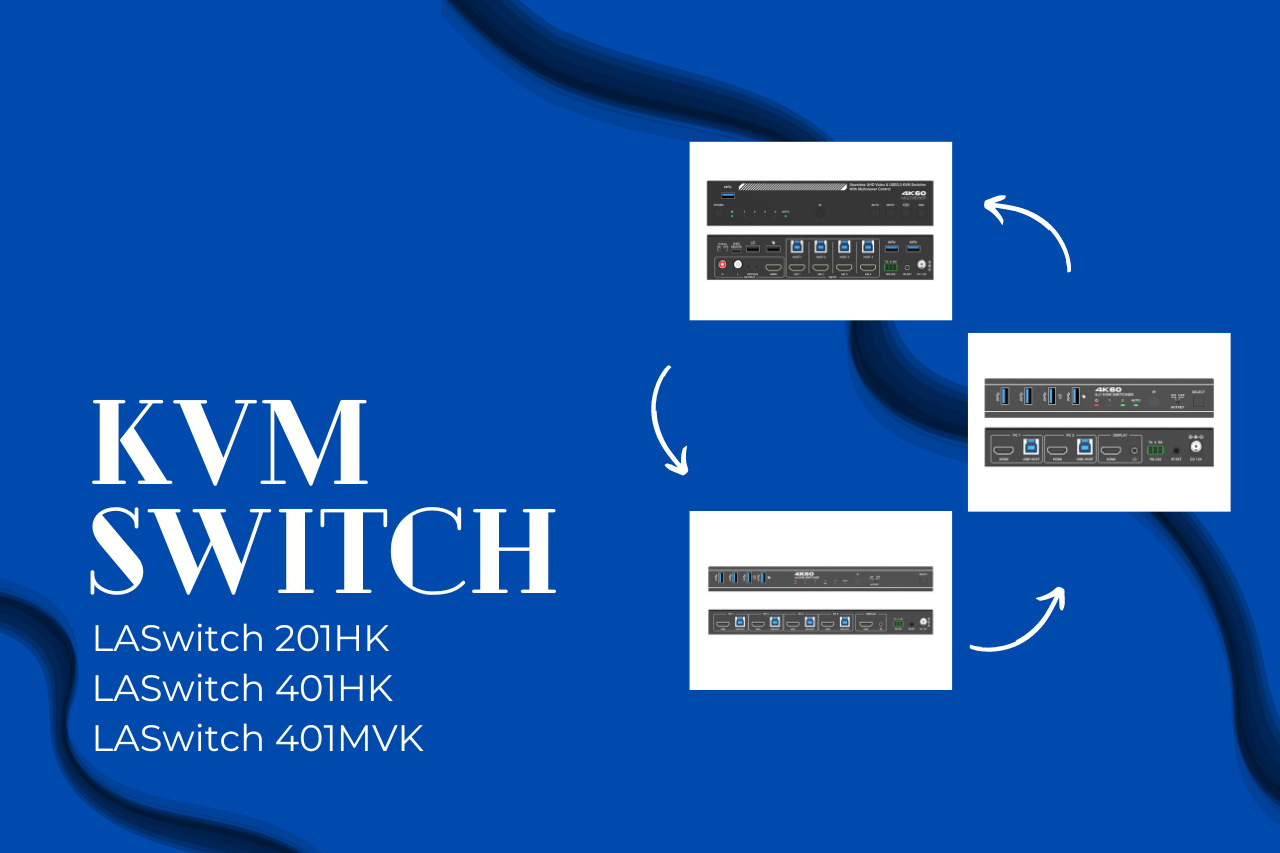KVM Switch
A KVM switch, which stands for Keyboard, Video, and Mouse switch, is a device that allows a user to control multiple computers from a single keyboard, video monitor (display), and mouse. Here’s why KVM switches are important and how they function:
### Importance of KVM Switches:
1. **Efficient Use of Resources**: KVM switches enable users to manage multiple computers or servers from a single workstation setup. This reduces the need for multiple sets of peripherals (keyboard, mouse, monitor), saving space and cost.
2. **Increased Productivity**: With a KVM switch, users can seamlessly switch between different computers or servers without physically disconnecting and reconnecting peripherals. This streamlines workflow and reduces downtime, enhancing overall productivity.
3. **Centralized Management**: In environments such as data centers, server rooms, or IT labs, KVM switches provide centralized control over multiple servers or computers. Administrators can perform maintenance tasks, updates, and troubleshooting efficiently from a single console.
4. **Space Savings**: By consolidating peripherals for multiple computers into one workstation, KVM switches contribute to a more organized and clutter-free workspace. This is particularly valuable in environments where space is limited or where neatness is important.
5. **Security and Access Control**: KVM switches can enhance security by allowing administrators to manage access to sensitive systems from a central location. This reduces the risk of unauthorized physical access to servers or workstations.
6. **Compatibility and Flexibility**: KVM switches are designed to be compatible with various operating systems and hardware configurations. They support different types of connections (e.g., USB, PS/2, VGA, HDMI) to accommodate diverse IT setups and evolving technology standards.
### How KVM Switches Work:
– **Switching Mechanism**: KVM switches typically include buttons, keyboard hotkeys, or software controls that allow users to switch between connected computers. Some advanced models support automatic switching based on user-defined settings or activity detection.
– **Connection Types**: KVM switches feature ports where keyboards, mice, and monitors from multiple computers can be connected. These ports are usually labeled and may include USB, PS/2, VGA, DVI, HDMI, DisplayPort, or other interface standards depending on the model.
– **Signal Transmission**: The switch actively manages and routes keyboard, video, and mouse signals between the connected computers and the shared peripherals. This ensures that the user’s inputs (keystrokes, mouse movements) are sent to the selected computer, and the computer’s video output is displayed on the monitor.




